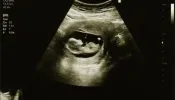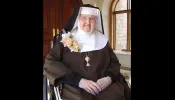Introduction
Parents are rightly concerned about adult predators who interact with children online in order to have sexually explicit conversations with them or to exchange sexually explicit pictures or to meet in person for actual sex. Thankfully, there are many programs that inform parents and children about online predation. Many law enforcement agencies and prosecutors are also working hard to put online predators behind bars.
But there is another online problem that is affecting far greater numbers of children – namely, exposure to “adult” pornography, most of which is hardcore. Hardcore “adult” pornography does not depict actual children under age 18, but it does include depictions of sex with persons who look like children, sex with animals, sex with excrement, sex with siblings, sex with multiple partners, sex with prostitutes, sex with she-males, sex with someone else’s spouse, and the degradation, rape, torture, and murder of women.
Contrary to what some people may say, “adult” pornography is not harmless. There are also obscenity laws that can be enforced against hardcore “adult” pornography.
How many children are exposed to pornography online?
According to a study conducted by the Crimes Against Children Research Center (Univ. of New Hampshire), the percentage of children (ages 10 to 17) who said they had an unwanted exposure to sexual material in the past year rose from 25% in 2000 to 34% in 2005; and 13% of these youth said they had “gone to an X-rated site on purpose in the past year,” compared to 8% in 2000. Among 16- and 17-year old boys, 38% said they had visited X-rated sites on purpose in the past year. According to a survey conducted in 2004 by the
Why are so many children exposed to pornography online?
· Because the courts have invalidated every law intended to restrict children’s access to online pornography, and most website distributors of “adult” pornography allow visitors to view pornography free of charge (as teasers) and without proof of age.
· Because many online commercial pornographers promote their wares by unscrupulous means (e.g., “porn spam” or misleading domain names). Search engines also make it easy for children to find “adult” pornography online.
· Because the U.S. Justice Department has not vigorously enforced federal obscenity laws against online distributors of hardcore “adult” pornography.
· Because many parents don’t use filtering or monitoring technology.
How does “adult” pornography harm children?
Here’s how Dr. Mary Anne Layden, Director of Education, Center for Cognitive Therapy, at the
The messages of Internet pornography are psychologically toxic, untrue, and difficult to undo… You wouldn’t allow the drug pusher on the corner to come into your home…and teach your child about medication. Why would you allow the sex pusher on the Internet to come into your home…and educate your child about sexuality?
Here’s how Dr. Victor B. Cline, a clinical psychologist and Professor Emeritus at the
I have boys in their early teens getting into that stuff with really disastrous consequences. They tell me they actively search for pornography on the Internet, keying in such words as sex, nudity, pornography, obscenity, etc. Once they have found how to access it they go back again and again—just like drug addicts.
Here’s how Dr. Lynn Ponton, a professor of psychiatry at
I see boys who are addicted to sex sites on the Internet that show sadistic behavior toward women. It affects those boys' sexual lives and also what we see with our daughters.
Here’s how Robert Peters, President of Morality in Media, described the problem:
Many men arrested on sexual exploitation of children charges begin their downward spiral by viewing not child pornography but “adult” pornography, and child molesters often use “adult” pornography to arouse, desensitize and instruct their victims. A growing number of children are also acting out with other children what they view in “adult” pornography. Children are also harmed when their parents divorce because of a spouse’s addiction to “adult” pornography and when their own pornography addiction follows them into adulthood, leading or contributing to various harmful results, including ruined marriages, lost jobs and imprisonment.
How can parents protect their children from “adult” pornography online?
· Don’t be afraid to “peek” over your child’s shoulder to see what he or she is viewing; talk to your children about how pornography harms people of all ages (For resource material, go to www.obscenitycrimes.org, Porn Problem, Help for Porn Victims & Help for Parents pages).
· Use filters and/or monitors on all electronic devices under your control that enable children to access the Internet. Be aware, however, that filters don’t block all pornography, that technology isn’t foolproof, and that as children get older most can access the Internet via electronic devices that are not under your control.
· Make complaints about hardcore “adult” pornography on the Internet to the U.S. Justice Dept. (To make a complaint, go to www.obscenitycrimes.org).
· Realize that the First Amendment was never intended to permit adults to peddle pornography without any legal obligation to restrict children’s access to it, despite what some judges say.
Printed with permission from Morality in Media, Inc.











